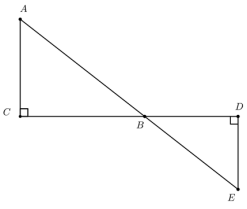Questões de Concurso Militar PM-PR 2022 para Cadete
Foram encontradas 60 questões
1. It stands for both up-to-date and conventional patterns.
2. People wear it in different ways.
3. Both men and women can wear it.
4. People cannot avoid an arrogant attitude when they put it on.
Mark the affirmative(s) that is/are present in the text.
Coal fire crackdown and London mosque stabbing
(Available in: https://www.bbc.com/news/blogs-the-papers-51581385.)
The headline in a British newspaper refers to:
Para esse caso, considerando o padrão de herança e as interações alélicas dos genes que determinam a cor da flor nas espécies A e B, assinale a alternativa correta.
1. Os microrganismos atuam na ciclagem de nutrientes, melhorando a estrutura do solo e degradando poluentes orgânicos.
2. Uma importante relação dos microrganismos do solo com as plantas é a fixação biológica de nitrogênio.
3. A microbiota do solo promove a redução da capacidade de absorção de água do solo, melhorando sua estrutura.
4. Os microrganismos do solo diminuem a capacidade tampão do solo, favorecendo os plantios agrícolas.
Assinale a alternativa correta.



Assinale a alternativa correta.

Assinale a alternativa que corresponde à soma dos valores de θ ∋ [0, π] que satisfazem detA = -13.
O choque da morte de Maomé foi uma das mais sérias crises que a comunidade muçulmana teve de enfrentar. Até então, Maomé guiara cada um de seus passos. Como então poderiam continuar sem ele? [...] Alguns muçulmanos mais comprometidos também ficaram imaginando se a morte de Maomé pusera mesmo fim à sua empreitada, e os que desejavam apontar um sucessor dividiram-se imediatamente em grupos rivais.
(ARMSTRONG, Karen. Maomé: uma biografia do profeta. Tradução Andréia Guerini, Fabiano Seixas Fernandes, Walter Carlos Costa. São Paulo: Companhia das Letras, 2002, p. 288-289.)
Considerando o excerto acima, é correto afirmar que a crise acarretada pela morte de Maomé teve como resultado:
[...] o acúmulo de agressões que atingiram as populações do Ocidente de 1348 ao começo do século XVIII criou, de alto a baixo do corpo social, um abalo psíquico profundo [...]. Constitui-se um ‘país do medo’ no interior do qual uma civilização se sentiu ‘pouco à vontade’ e povoou de fantasmas mórbidos.
(DELUMEAU, J. História do Medo no Ocidente: 1300-1800, Uma Cidade Sitiada. Tradução Maria Lucia Machado. São Paulo: Companhia das Letras, 2009, p. 43.)
De acordo com os conhecimentos sobre a Europa no século XIV, são duas das principais “agressões” relacionadas ao excerto acima:
[...] essa foi a única revolta de escravos bem-sucedida da História, e as dificuldades que tiveram de superar colocam em evidência a magnitude dos interesses envolvidos.
(JAMES, C. J. R. Os Jacobinos Negros. Tradução Afonso Teixeira Filho. São Paulo: Boitempo, 2010, p. 15.)
O excerto acima se refere à/ao: